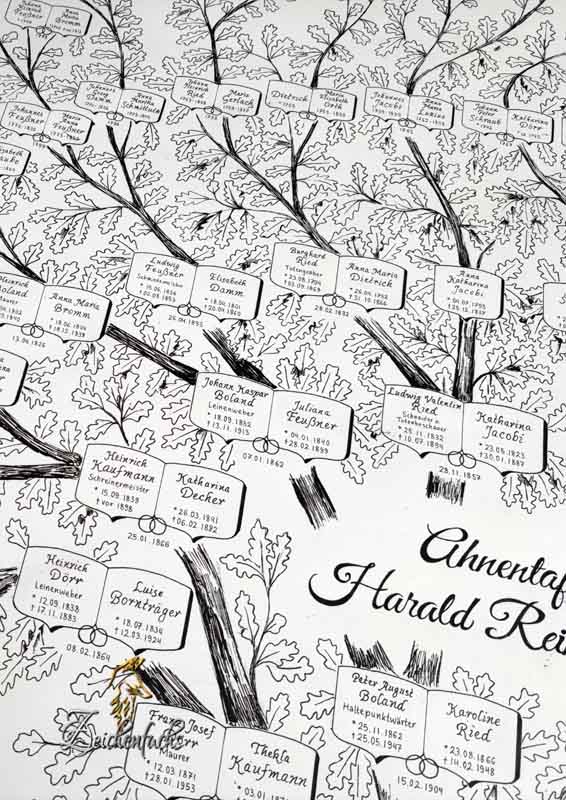Ink Drawing - Family Trees
Pen or ink drawing?
For a long time we have labeled all watercolor family trees in the classic way with a pen. However, the differences between a pen and ink drawing are marginal for the viewer. We have therefore decided to permanently use ink drawings. If processing with the spring is explicitly desired, we have to take this into account with a higher total price. You are welcome to address the pen drawing to us as a special request during processing.
Yes, a pen drawing appears more valuable due to the light reflections or a particularly thick application. However, these effects do not play a role at a greater distance from the viewer.
A family tree as an ink drawing is comparatively easier to make than a colored watercolor or even an acrylic painting. However, ink drawings have the disadvantage that corrections are almost impossible.
The ink drawing is usually made on white paper. While document paper can be painted over and thus minor errors can be concealed, this is hardly possible with an ink drawing without leaving a trace. Of course, this risk makes the ink drawing appear much more complex overall than, for example, a pencil drawing.
We now also offer complete ink drawings for family trees and pedigrees. Previously, the ink technique was used to label the colored family trees. Ink has the great advantage of a very high contrast. The writing is easily recognizable even on a painted background.
Individual elements can also be colored in the ink drawing. However, if you want a colored representation, we recommend the classic watercolor family tree. Colored treetops are always at least equal to a watercolor painting in terms of effort (and accordingly also the fee).
Family trees in the ink technique are basically black and white and, unlike pencil drawings, have no shades of gray. Shading is created by hatching. If a certain color has to be simulated, the heraldic tinting can also be used. It is a kind of color code where all areas of a graphic are worked out according to a specific pattern. For example, the coloring of the (family) coat of arms can be displayed correctly without having to switch to pure contour graphics.
Example: All black areas of a coat of arms can be simulated with cross-hatching using the ink technique. If you see a dotted field, it is usually a gold background.


